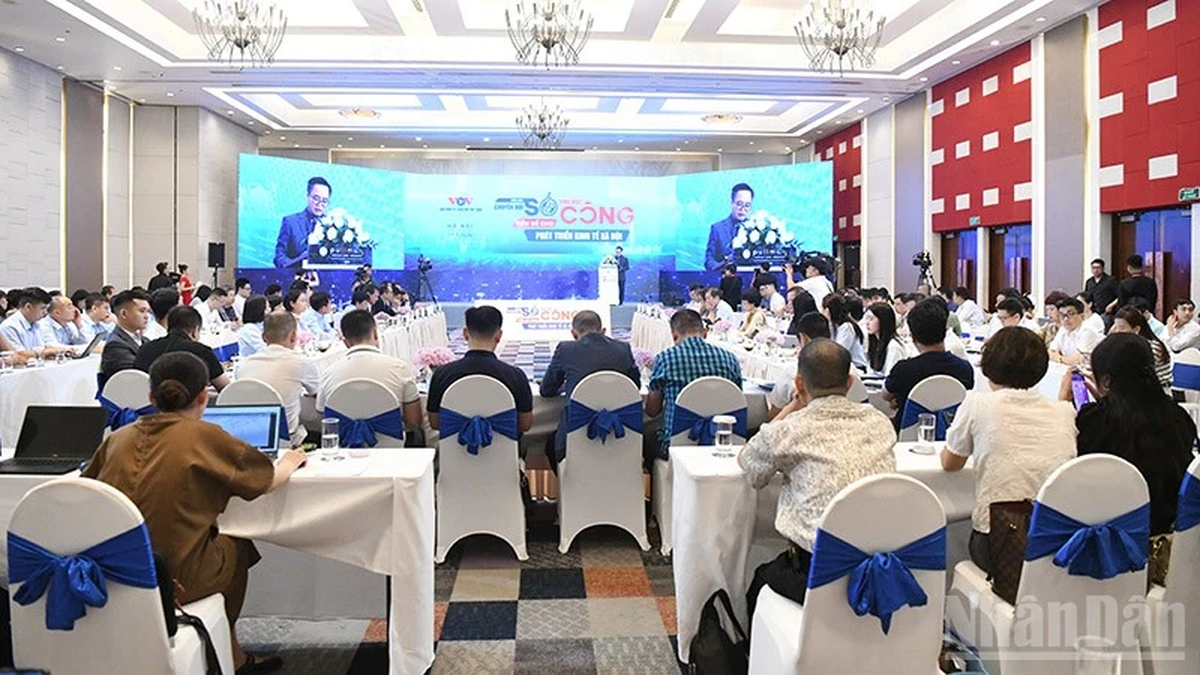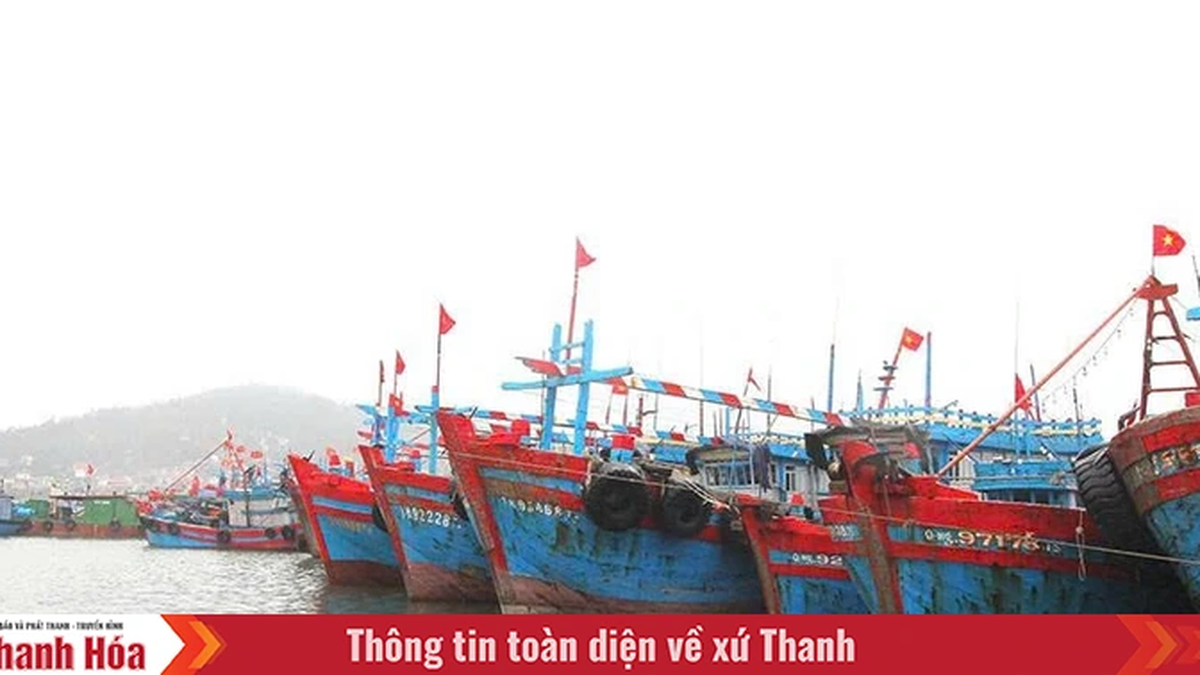Ho Chi Minh City must solve equations with many unknowns.
On July 17, at the seminar "Driving force for industrial development in Ho Chi Minh City", many experts frankly admitted that although Ho Chi Minh City's industry is developing rapidly, it lacks technological depth.
According to experts, dispersion and lack of regional connectivity have prevented industrial parks from creating large value chains, while basic technological capacity is still weak.

The industrial capital of Binh Duong has always been the brightest star in attracting investment and developing the manufacturing and processing industry with new technology. (Photo: N. Thanh)
Dr. Nguyen Thanh Trong - Eastern International University, said that the city does not have comprehensive and reliable survey data on the current status of industries. This makes it difficult to correctly identify key industries and build long-term industrial development strategies.
Proposing policies to guide the new Ho Chi Minh City's key industrial policies, Dr. Do Thien Anh Tuan, Lecturer at the Fulbright School of Public Policy and Management, said that the city needs to selectively attract investment, prioritizing high-quality projects associated with the goal of industrial transformation.
In particular, developing supporting industries and improving localization capacity are considered the foundation for the city to not only process but also gradually take the initiative in the value chain.
At the same time, the city must innovate human resources and institutions to serve high-quality industry, increasing competitiveness through digital and green infrastructure.
According to economic expert Tran Du Lich, to develop the city's industry strongly, it must solve the equation with many unknowns. To achieve a double-digit industrial growth rate, the new Ho Chi Minh City cannot follow the old growth model. That is, horizontal growth is currently focused on cheap labor. In the future, cheap labor will no longer be found.
“HCMC should develop industry in the direction of effectively applying science and technology, innovation, and digital transformation. In particular, it is necessary to increase the added value of products in the global value chain. I affirm that industry cannot grow by double digits without increasing the proportion of added value in the product structure,” Mr. Lich emphasized.
He believes that Ho Chi Minh City must solve this problem as a pioneer in the country and thinking in a new direction will help the city of 14 million people escape the middle-income "trap".

Expert Tran Du Lich said that if Ho Chi Minh City wants to develop new industries, it must solve equations with many unknowns.
Mr. Tran Du Lich proposed many solutions, in which the immediate thing to do is to adjust the industrial planning of the new Ho Chi Minh City with a new scale and new vision.
In particular, the planning needs to be rearranged according to the advantages associated with the Resolution of the Politburo on the planning of the Southeast, establishing an industrial and urban service belt from Binh Duong to Vung Tau to Cai Mep - Thi Vai. Adjusting industry associated with urban services.
Next, the city must study and evaluate each industry and group of industries in terms of the proportion of added value in the product value structure. In particular, it must immediately build a free trade zone in Cai Mep - Thi Vai.
“In the new phase, only free trade zones can directly participate in the global distribution value chain and attract strong investment. Ho Chi Minh City must implement it quickly because this is considered a breakthrough. This free trade zone will also connect with the planned logistics centers (ICDs) in Di An and Thuan An to improve the efficiency of supply chain operations,” he said.
In addition, he suggested that key industries in Ho Chi Minh City should choose a large-scale industrial park to implement the value chain. For example, the garment industry has enough weaving, dyeing, spinning, and button making to supply raw materials for the textile and footwear industry.
Ho Chi Minh City's industry must act quickly and first in transforming the structure of raw materials, increasing the proportion of localization with products that match the trend.
Need to think without dividing according to old boundaries
Ms. Ly Kim Chi, President of the Ho Chi Minh City Food and Foodstuff Association, recommended that there should be a completely new mindset in industrial policy planning - not dividing according to old boundaries, but needing a comprehensive integrated approach in a unified economic space.

Ho Chi Minh City's industry only contributes 30% of GRDP to the city, which has the most industrial parks and export processing zones in the country. (Photo: N. Thanh)
Ho Chi Minh City urgently develops and promulgates the Overall Strategy for Industrial Development to 2040. On that basis, review, zone and re-plan the industrial park system towards specialization, modernity, sustainability and suitability to the production characteristics of the industry.
Prioritize the arrangement of food industrial parks in areas with clean land funds, wastewater treatment infrastructure meeting industry standards, convenient connection to raw material areas and large consumption centers.
The city should invest in developing modern cold logistics centers in the Cai Mep - Thi Vai port area, in line with the orientation of this place becoming an international logistics center.
"If we take advantage of the opportunity to reorganize industrial space, Ho Chi Minh City can become a model of integrated development - where each industry has its own strategy, infrastructure and appropriate support mechanisms," Ms. Chi affirmed.
Dr. Do Thien Anh Tuan assessed that Binh Duong, Ba Ria - Vung Tau and the old Ho Chi Minh City are all "stars" in the country's industrial development associated with the industrialization - modernization strategy with their own advantages.
He pointed out the goals and visions for industrial development of the new Ho Chi Minh City in the future. Accordingly, on the national level, the new Ho Chi Minh City will play a leading role in leading Vietnam's industry to a development stage based on quality, productivity and innovation.
This expert suggested that Ho Chi Minh City should build a "borderless commercial center" to create a platform for Vietnamese businesses to connect directly with the global market. At the same time, develop financial centers, R&D center chains, digital logistics and smart industry.
Also at the discussion, Director of the Department of Industry and Trade of Ho Chi Minh City Bui Ta Hoang Vu said that industry has been affirming its pivotal role in the development of Ho Chi Minh City.
After the merger, the scale of the mega-city of Ho Chi Minh City with nearly 14 million people has great potential for stronger development. Ho Chi Minh City will continue to maintain its role as an industrial economic center, which is also the driving force to help the city realize its aspiration of double-digit growth in the coming years.
He also frankly acknowledged that Ho Chi Minh City's industry contributes 30% of GRDP, but still faces many bottlenecks, such as: Logistics costs account for 16-20% of product cost, higher than the regional average; clean industrial land is limited, land rental costs are high; production technology of many enterprises is still backward, low automation.
Sharing at the discussion, Mr. Park Hee Sung, representative of Kumho Tire Vietnam, requested that Ho Chi Minh City need to have policies to help key industries develop in a harmonious and balanced way, through upgrading industrial infrastructure such as electricity, transportation, logistics...
" We hope to see further enhancement of business-friendly administrative services, such as: establishing a separate one-stop shop for businesses, a hotline to support FDI enterprises, simplifying administrative procedures and focusing on sustainable development issues such as having more preferential policies to help businesses proactively invest," he said.
Currently, Ho Chi Minh City owns the largest industrial parks, export processing zones and industrial clusters in the country, with a total area of about 27,000 hectares, including 66 industrial parks/export processing zones in 3 regions, the largest of which is in the industrial capital of Binh Duong.
Ho Chi Minh City's processing and manufacturing industry output accounts for more than 30% of the country's total.
Mr. Tran Viet Ha - Deputy Head of the Management Board of Industrial Parks and Export Processing Zones of Ho Chi Minh City, said that according to the Vision Plan to 2050, Ho Chi Minh City will have 105 export processing zones and industrial parks with a total planning area of over 49,000 hectares, becoming the leading industrial center of the country and Southeast Asia.
Source: https://vtcnews.vn/muon-phat-trien-cong-nghiep-tp-hcm-phai-giai-duoc-phuong-trinh-nhieu-an-so-ar954840.html





































































































Comment (0)